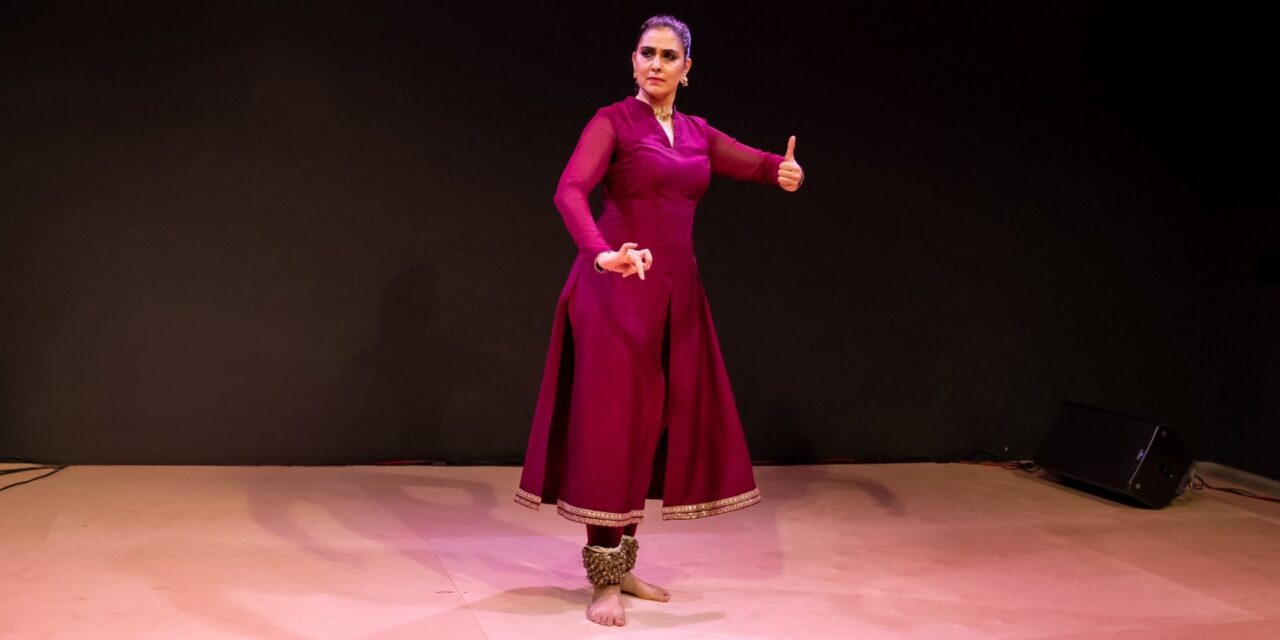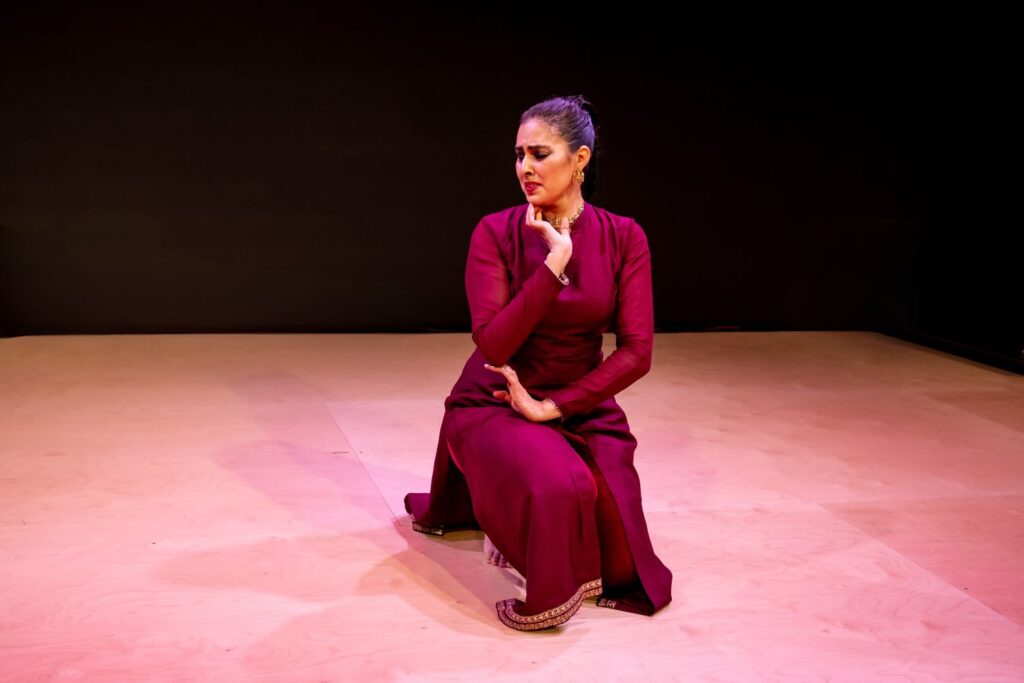On a rainy evening in November, I saw Sandhi presented at the Wende’s Creative Community Center for an exquisite evening showcasing the beautiful collaboration of music, dance and storytelling by Rukhmani Mehta with Jayanta Banerjee and Salar Nader from Leela Dance Collective. For this show they took on the challenge of presenting a Kathak solo which is one of the 8 classical types of Indian dance which originated in Northern India around 400 BCE. Kathak is known for its complex footwork, articulate hand positions, quick spins, and rhythmic storytelling. The vocabulary for this style originated in classical court performance often telling traditional stories of the Gods.
Leela Dance Collective originated in LA in 2016 and brings classical Kathak dance to audiences around the world, collaborating with a wide range of musicians and artists of across many genres – including tap dancers!
The performance began with a reverence to the earth, the music, the gods, and to one another. Rukhmani acknowledges Jayanta Banerjee on sitar and Salar Nader on tabla. From there, it shifted into a court dance from the 4th century that originated in temple traditions, telling stories of the gods before its evolution within Islamic courts. The piece used a 14 beat rhythmic cycle, with delicate articulations of the wrists, subtle shifts of the neck and expressive movement of the eyebrows. Mehta played her eyebrows like instruments, sometimes one, sometimes both, always perfectly synchronized with the beat. She kept time for the musicians, initiating each work by setting the rhythmic score herself.
There was often spoken poetry by two of the other company dancers, with Mehta’s perfectly aligned gestures feeling almost like a poetic form of ASL. Every movement was intentional, precise, articulate, and deeply connected to the words being spoken.
She wore a deep burgundy costume with bells wrapped around the bottoms of her pants above bare feet, allowing her footwork to become a percussive extension of the music. Her body seemed both inside of and inseparable from the score. Her rapid footwork often contrasted with a different tempo held by her upper body, creating a beautiful rhythmic duality punctuated by swift turns and moments of statuesque stillness. Repetition, both musical and physical, held as a thematic anchor throughout the work.
Salar Nader followed with an improvised tabla solo that unfolded like poetry, each stanza ending in rhyme. He then performed a piece originally commissioned by a king to be composed in 24 hours that was to mimic the sounds of a train. Nader delivered this masterfully, creating the rhythm of wheels on tracks, the acceleration and even the whistle through his playing.
Mehta returned with a piece of great intentionality and clarity. Set to a slower beat, it portrayed the sense of inevitable doom between two gods who love each other but knew their love was not meant to last. The emotional weight came through in the moments of pause and the steady footwork that would be broken up with sudden interruptions of jumps and triplets.
Next, Jayanta Banerjee performed a hauntingly beautiful piece on the sitar that reminded me of echoes drifting through a canyon. This piece was the perfect follow up for the dance before. Banerjee has accompanied and composed for some of the world’s greatest Indian classical dancers and musicians including Pandit Chitresh Das, Pandit Birju Maharaj, Dr. L Subramanium, Pandit Rajan and Sajan Mishra, Pandit Swapan Chaudhuri, Pandit Anindo Chatterjee, Ustad Sabir Khan, Pandit Bhawani Shankar, and Pandit Ramesh Mishra.

Rukhmani Mehta in Sandhi with musicians Salar Nader (left) and Jayanta Banerjee and and two dancers from Leela Dance Collective – Photo by Cheryl Del Cuore.
The final work told the Indian epic of Sita’s kidnapping, with Mehta performing as every character: the brother, the lover, Sita, and the deer who is actually a demon in disguise. Her transitions were instantaneous and crystal clear as she swapped emotion, posture, facial expression, and even the subtlest details of hands, feet, and neck to reveal an entirely new presence. Each character had its own repeated gestures, and soon I forgot I was watching a single performer.
By the end of the evening the lines between musician, dancer and narrative had dissolved leading to one authentic, emotional and historical performance. Mehta, Banerjee, and Nader carried the lineage of Kathak with extraordinary precision and heart, offering the audience an unfortunately rare look into this beautiful dance form.
To learn more about Rukhmani Mehta and the Leela Dance Collective, please visit their website.
Written by Denali Huff for LA Dance Chronicle.
Featured image: Rukhmani Mehta in Sandhi – Photo by Cheryl Del Cuore.










